
(Above and Left) Both sides of Lewis Smith's airmail letter
Click each image to enlarge in a new window
(Further Below) Transcript of the letter.
Click each image to enlarge in a new window
(Further Below) Transcript of the letter.
This letter is LOUWM:2018.65 in the museum catalogue
On the 20 November 1943, Lewis Smith was serving with the RAF 326 Maintenance Unit in India as an Aircraftman 1st Class. Christmas was just over a month away when he decided to write a letter to his brother, Tom Smith, Tom's wife, Doris (nee Garrett) and Doris's young cousin, Marion, who were all living with his wife's Aunt and Uncle (Beatrice and Fred) in a house in Hermitage Road, Whitwick in Coalville, Leicestershire. Lewis chose a fancy airmail letter which was decorated with cartoon characters depicting a mixture of Christmas themes - Christmas trees, parcels and snow - and contrasting stereotypical Indian themes - extreme heat, snake charmers, elephants and tigers.

Lewis mentions his trip to Calcutta, where he stayed at the Toc H and had a "good rest". His letter is short, but he promises he has "a few things to tell you when we get together again" and will recount "a few experiences" he has had in India.
1645035A.C.1. L.Smith
326 M.U. R.A.F.
India
Nov 20th /43.
Dear Tom, Doris & Marion,
I hope you are all alright and in good health as I am at present. I have just returned from a good rest which we both needed. I went with a mate to Calcutta for 14 days and we stayed at the Toc. H. It is nice to have places like these to go to. I shall have a few things to tell you when we get together again. It is getting a bit cooler now so it makes it a bit better to get about and it makes one feel better. You know a bit about what heat is don’t you with working in the shop. Is Doris and Marion keeping well also Mr and Mrs Garrett and I know you are busy and not have much time off.
I hope we shall be together by this time next year I hope so anyway and then we can talk over a few experiences over a glass. I have not had any since we arrived here in India we cannot get much and I never bother but still we will have one or two when we do meet. Write and let me know how you are. And all the Best to you Doris and Marion. Brother Lewis XXX
326 M.U. R.A.F.
India
Nov 20th /43.
Dear Tom, Doris & Marion,
I hope you are all alright and in good health as I am at present. I have just returned from a good rest which we both needed. I went with a mate to Calcutta for 14 days and we stayed at the Toc. H. It is nice to have places like these to go to. I shall have a few things to tell you when we get together again. It is getting a bit cooler now so it makes it a bit better to get about and it makes one feel better. You know a bit about what heat is don’t you with working in the shop. Is Doris and Marion keeping well also Mr and Mrs Garrett and I know you are busy and not have much time off.
I hope we shall be together by this time next year I hope so anyway and then we can talk over a few experiences over a glass. I have not had any since we arrived here in India we cannot get much and I never bother but still we will have one or two when we do meet. Write and let me know how you are. And all the Best to you Doris and Marion. Brother Lewis XXX
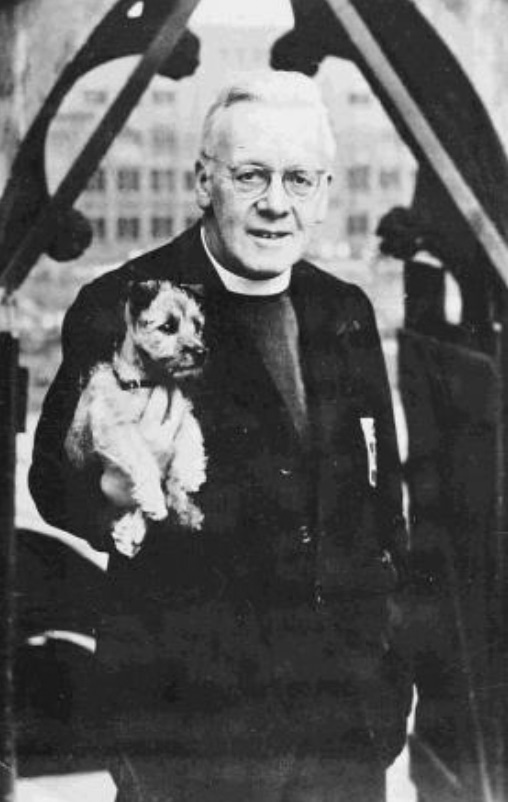
(Above) Rev. Philip Clayton known as Tubby Clayton, one of the founders of Toc H.
(Far Left) Talbot House in Poperinge, Belgium, 1915. The origin of the name Toc H.
(Far Left) Talbot House in Poperinge, Belgium, 1915. The origin of the name Toc H.
Public domain images
What was the RAF 326 Maintenance Unit?
RAF Maintenance Units were responsible for receiving and maintaining aircraft and associated parts and equipment. They would ensure that aircraft were kept in air-worthy condition for supply to active units.
The 326 Maintenance Unit was formerly 1 Reserve Aircraft Pool (Asansol), and in November 1943, relocated to Bishnapur in West Bengal, 145 kilometres (90 miles) from Calcutta.
Following the Japanese invasion of Burma (now Myanmar), the 326 MU would have supplied bombers in support of the fighting against the Japanese in what had been part of British India until 1938, and which lay little more than one thousand kilometres (620 miles) to the east.
RAF Maintenance Units were responsible for receiving and maintaining aircraft and associated parts and equipment. They would ensure that aircraft were kept in air-worthy condition for supply to active units.
The 326 Maintenance Unit was formerly 1 Reserve Aircraft Pool (Asansol), and in November 1943, relocated to Bishnapur in West Bengal, 145 kilometres (90 miles) from Calcutta.
Following the Japanese invasion of Burma (now Myanmar), the 326 MU would have supplied bombers in support of the fighting against the Japanese in what had been part of British India until 1938, and which lay little more than one thousand kilometres (620 miles) to the east.
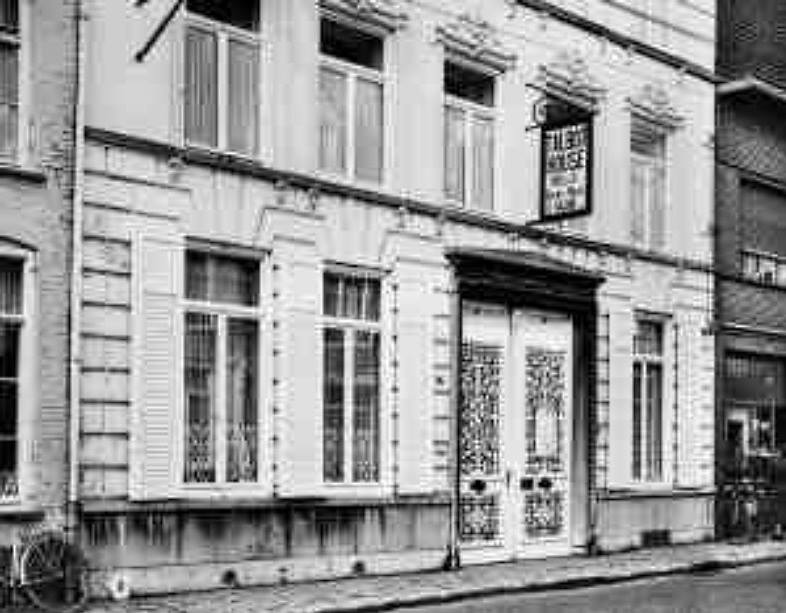 Toc H: "Every-Man's Club"
Toc H: "Every-Man's Club"Toc H was the name of an international movement that originally provided rest and recreational facilities for servicemen. It was founded on Christian principals by Neville Talbot and the Rev. Philip Clayton in Poperinge, Belgium, during the First World War, in memory of Neville Talbot's brother, who died in the war.
The sign seen above the door reads "Every-Man's Club". This was a reference to their policy that all ranks were to be treated equally.
This first building was called Talbot House, but the movement became known as Toc H, "toc" being the signallers' term for the letter 'T'.
The movement spread around the world, and in 1937 opened the house in Calcutta (now Kolkata) where Lewis Smith stayed for 14 days. In 1943, another followed in Madras (Chennai).
Over the years the organisation has become more inclusive, reaching out to others besides servicemen, and its aims have spread to embrace other activities. Today Toc H has a well established educational facility in Kochi providing a Public School, Engineering College and an Institute of Science and Technology.
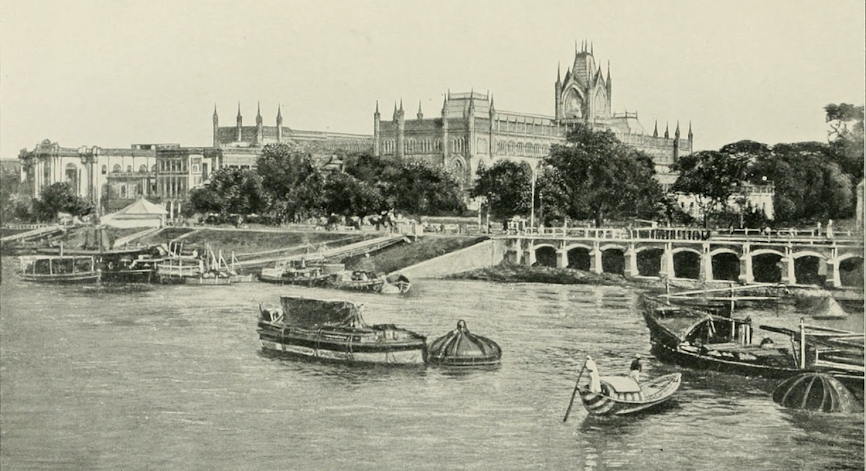
(Above) The Strand, Calcutta, 1900
Public domain image via wikimedia citing work by Kathleen Blechynden
The city, which stands on the Hooghly River has all the palaces, temples and other fine buildings you might expect of a former Indian capital, but it was also a vibrant trading city and, in 1943 when Lewis Smith visited the city, the streets would have been thronging with activity.
A Brief History of Calcutta
The West Bengal city of Calcutta (now Kolkata) has a long history, dating back to settlements in the area at a time before the Mughal emperors.
In the 17th and 18th centuries, the British East India Company took over most of India through treaties and conquest, and built Fort William in what they called Calcutta in 1696.
In 1772, the company made Calcutta the capital of British India, and it remained the capital until this role was given to Delhi in 1911.
The city remains the capital of the state of West Bengal. The name was officially changed to Kolkata in 2001, returning it to its original, pre-colonial, Bengali name, and many other Indian cities have done likewise, or devised new names.
The West Bengal city of Calcutta (now Kolkata) has a long history, dating back to settlements in the area at a time before the Mughal emperors.
In the 17th and 18th centuries, the British East India Company took over most of India through treaties and conquest, and built Fort William in what they called Calcutta in 1696.
In 1772, the company made Calcutta the capital of British India, and it remained the capital until this role was given to Delhi in 1911.
The city remains the capital of the state of West Bengal. The name was officially changed to Kolkata in 2001, returning it to its original, pre-colonial, Bengali name, and many other Indian cities have done likewise, or devised new names.
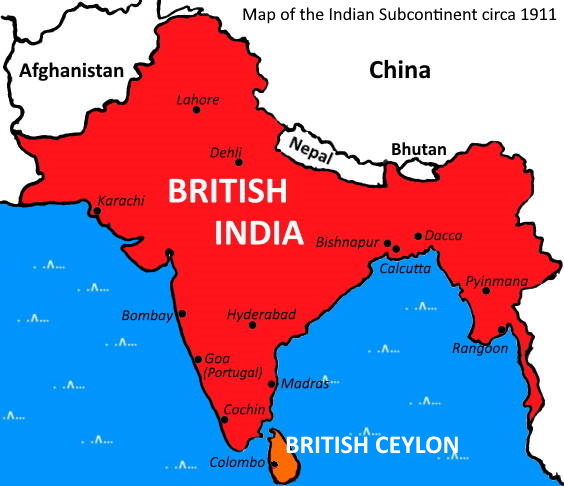
However, there was a darker side to Calcutta in 1943. Japanese forces had overrun Burma and had mounted bombing raids on Calcutta in 1942 and 1943. Fleeing Burmese refugees had swollen the population in the Calcutta area. Food was scarce, and a rapid inflation of food prices forced many people into poverty and onto the streets. The British government rejected calls for a halt to rice exports from the area or to redirect food to the starving.
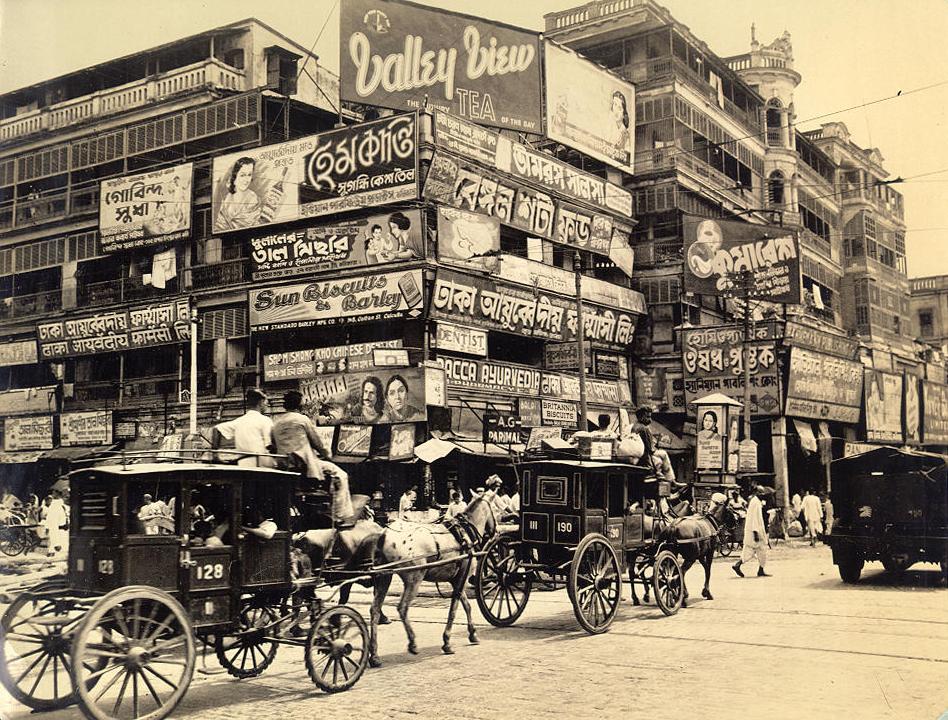
(Above) Burra Baza, corner of Harrison Street and Strand Road, Calcutta, c1945
Public domain image via wikimedia
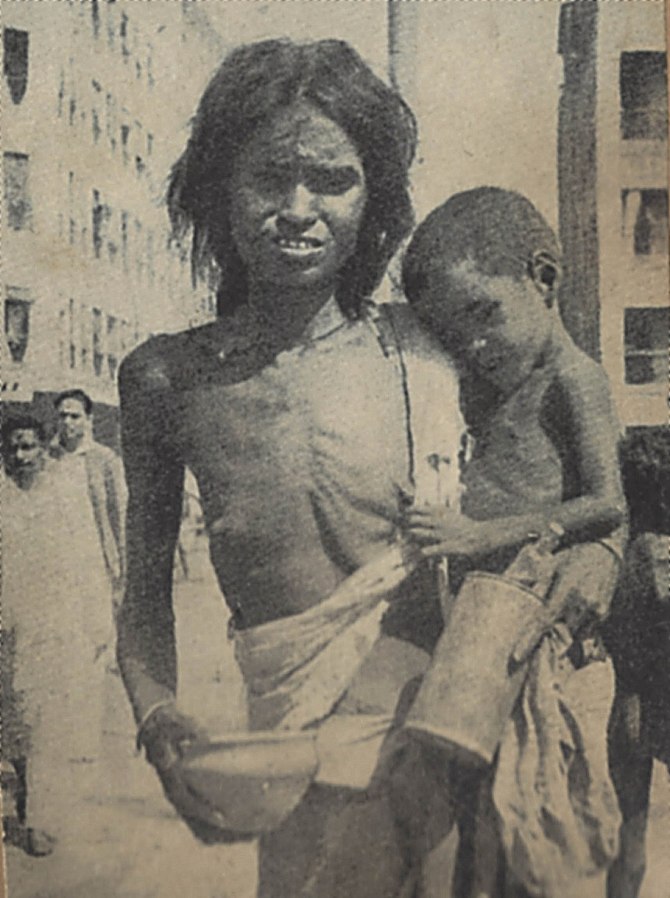
Calcutta was already a fairly radical city, but the famine and the lack of action by the British authorities helped to stoke public opinion in support of Indian independence.
(Right) Mother with child, begging on the streets of Calcutta, during the famine, 1943
Public domain image via wikimedia
What Happened Next?
In 1938, prior to World War II, Burma separated from India and became British Burma.
In August 1945, the war against Japan ended and the fighting in Burma ceased.
In 1947, India was granted independence from Britain. The country was partitioned to created two separate states. The larger state, the Republic of India, had a Hindu majority population, while the Islamic Republic of Pakistan held territory in the north-west, and a smaller exclave in the north-east of the Indian subcontinent.
In 1948, both Burma and Ceylon became independent of Britain.
In 1971, following civil war between East Pakistan and West Pakistan, East Pakistan broke away with a new name of Bangladesh, meaning the Land of Bengal.
In 1972, on becoming a republic, Ceylon changed its name to Sri Lanka, and in 1989 the Union of Burma became the Union of Myanmar.
Lewis Smith survived World War II and returned to live in Coalville. Born in May 1902, he had been 41 years old in 1943 when he visited Calcutta. He lived to be 74, dying in January 1977.
In 1938, prior to World War II, Burma separated from India and became British Burma.
In August 1945, the war against Japan ended and the fighting in Burma ceased.
In 1947, India was granted independence from Britain. The country was partitioned to created two separate states. The larger state, the Republic of India, had a Hindu majority population, while the Islamic Republic of Pakistan held territory in the north-west, and a smaller exclave in the north-east of the Indian subcontinent.
In 1948, both Burma and Ceylon became independent of Britain.
In 1971, following civil war between East Pakistan and West Pakistan, East Pakistan broke away with a new name of Bangladesh, meaning the Land of Bengal.
In 1972, on becoming a republic, Ceylon changed its name to Sri Lanka, and in 1989 the Union of Burma became the Union of Myanmar.
Lewis Smith survived World War II and returned to live in Coalville. Born in May 1902, he had been 41 years old in 1943 when he visited Calcutta. He lived to be 74, dying in January 1977.
